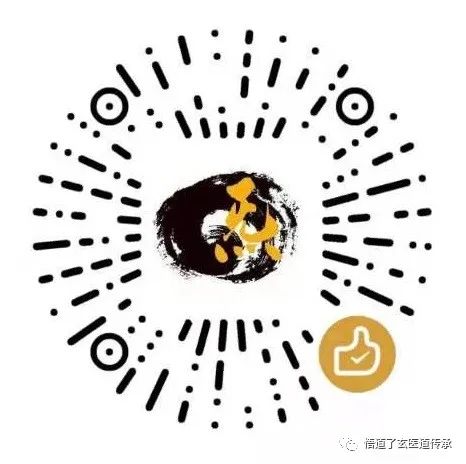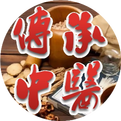Esophageal Obstruction (Yēgé)
Esophageal obstruction is often caused by emotional distress, injury from food and alcohol, aging, physical weakness, and organ dysfunction. The pathogenesis involves phlegm and qi obstruction, phlegm and blood stasis, and deficiency of fluids leading to dryness, resulting in the stomach’s inability to harmonize and descend. Clinically, it is characterized by difficulty swallowing, food getting stuck, or immediate vomiting after ingestion. In modern medicine, conditions such as esophagitis, benign esophageal stricture, esophageal achalasia, esophageal spasm, esophageal diverticulum, esophageal cancer, and other diseases can present with similar symptoms and can be treated based on this syndrome differentiation.
Diagnostic Criteria:
1. The main symptom is a sensation of obstruction behind the sternum when swallowing food. Over time, it becomes difficult to swallow, and in severe cases, food is vomited immediately, often mixed with phlegm, leading to gradual weight loss.
2. The onset may be gradual due to emotional distress and deficiency of righteous qi, or rapid if caused by food injury and phlegm-blood stasis in the esophagus and cardia.
3. Triggering factors include invasion of external pathogens, internal emotional injuries, irregular diet, and excessive labor, all of which can induce or exacerbate this condition.
4. Physical examinations such as barium swallow X-ray may show spasm, stricture, or tumors in the esophagus or cardia. Endoscopy and tissue biopsy can confirm the location and nature of the lesions. A diagnosis can be made based on the main symptoms, combined with the onset, triggers, and physical examination findings.
Key Differentiation Points:
1. Reflux presents as food stagnation in the stomach, with symptoms of vomiting undigested food, but without the sensation of obstruction when swallowing.
2. Vomiting primarily consists of undigested food, phlegm, or dry heaves, with the disease located in the stomach, generally having a better prognosis.
3. Plum pit qi presents as a sensation of obstruction in the throat, which cannot be coughed out or swallowed down, but does not hinder eating, and there is no sensation of obstruction when swallowing.
4. Cardiac obstruction presents with persistent vomiting, difficulty with urination, and symptoms of weakness, but the initial symptoms are primarily persistent vomiting and difficulty urinating, without the sensation of obstruction when swallowing.
Syndrome Differentiation and Treatment:
1. Key Points of Syndrome Differentiation:
(1) Identify the location of the disease: This condition primarily affects the esophagus and is related to the spleen, stomach, liver, and kidneys. If the main symptoms are accompanied by chest oppression and emotional factors, it is mainly related to the liver and stomach; if accompanied by weight loss, dry mouth, and a red tongue with little fluid, it is mainly related to the liver and kidneys; if there are long-standing changes with clear fluid vomiting and edema, it is mainly related to the spleen and kidneys.
(2) Differentiate between deficiency and excess: Initially, it is often an excess condition, which may later become mixed with deficiency, ultimately leading to weakened yang qi and significant damage to righteous qi. If swallowing is obstructed with chest oppression and emotional factors, with little food intake and much phlegm, a greasy tongue coating and slippery pulse indicate phlegm-qi obstruction; if food cannot be swallowed, with immediate vomiting of red bean-like fluid, chest pain, a purple tongue with stasis points, and a choppy pulse, it indicates blood stasis obstruction; if food cannot be swallowed, with dry mouth, weight loss, constipation, a red tongue with little fluid, and a thin rapid pulse, it indicates fluid deficiency with heat accumulation; if water cannot be swallowed, with vomiting of sticky phlegm, cold limbs, facial swelling, a pale swollen tongue, white slippery coating, and a weak pulse, it indicates qi deficiency with weak yang.
(3) Differentiate severity: If swallowing is obstructed but food can still be swallowed, it is classified as obstruction (yē), generally indicating a milder condition; if there is a complete refusal to swallow solid and liquid food, accompanied by chest pain, constipation, and significant weight loss, it is classified as obstruction (gé), indicating a more severe condition.
2. Treatment Principles: The treatment of esophageal obstruction follows the principle of “treating the symptoms urgently and addressing the root cause gradually.” In the early stages, treatment should focus on resolving qi stagnation, phlegm obstruction, blood stasis, clearing heat, detoxifying, and dispersing masses, while also nourishing yin and moistening dryness according to the condition; in the later stages, when righteous qi is significantly damaged, the main treatment should be to tonify deficiency and support weakness. For those with qi deficiency and weak yang, warming and tonifying the spleen and kidneys is essential, while those with deficiency of fluids and blood should nourish yin and blood, with appropriate methods to attack pathogens.
3. Syndrome Differentiation and Treatment:
(1) Phlegm-qi obstruction:
【Symptoms】Difficulty swallowing, chest oppression, worsened by emotional stress, dry mouth, vomiting phlegm, red tongue with greasy coating, and a wiry slippery pulse.
【Treatment Method】Regulate qi, relieve stagnation, moisten dryness, and transform phlegm.
【Formula】The main formula is Qǐgě Sǎn (Qigong Powder). Ingredients: Yùjīn (Curcuma) 10g, Shārén (Amomum) 6g (add at the end), Dānsēn (Salvia) 12g, Běi Shāshēn (North Glehnia) 12g, Chuān Bèi Mǔ (Fritillaria) 9g, Fú Líng (Poria) 15g, Guā Lóu (Trichosanthes) 12g, Chén Pí (Citrus Peel) 12g, Hè Yè Dǐ (Lotus Leaf) 9g, Chǔtóu Gāng (Chaff) 6g.
(2) Blood stasis obstruction:
【Symptoms】Difficulty swallowing, immediate vomiting of red bean-like sticky fluid, weight loss, dry skin, purple tongue with stasis points, and a thin choppy pulse.
【Treatment Method】Break stasis, regulate blood, nourish yin, and tonify blood.
【Formula】The main formula is Tōng Yōu Tāng (Open the Ghost Decoction). Ingredients: Dāngguī (Angelica) 15g, Shēng Dìhuāng (Rehmannia) 15g, Táo Rén (Peach Kernel), Hóng Huā (Carthamus), Chì Sháo (Red Peony), Wǔ Líng Zhī (Wulingzhi), Shú Dìhuāng (Cooked Rehmannia) 9g, Hǎi Zǎo (Sargassum) 9g, Shēng Mǎ (Cimicifuga) 4.5g, Guā Lóu (Trichosanthes) 12g.
(3) Fluid deficiency with heat accumulation:
【Symptoms】Refusal to swallow food, immediate vomiting, pain with obstruction, but soup can be swallowed, weight loss, dry throat, constipation, five hearts heat, red tongue with little dry coating, and a thin rapid pulse.
【Treatment Method】Nourish fluids, drain heat, and disperse masses.
【Formula】The main formula is Wǔ Zhī Ān Zhōng Yǐn (Five Juices to Calm the Center Drink). Ingredients: Jiǔ Zhī (Leek Juice), Lí Zhī (Pear Juice), Ǎo Zhī (Lotus Root Juice), Shēng Jiāng (Fresh Ginger Juice), Niú Nǎi (Cow’s Milk) each 15g, Shēng Dìhuāng (Rehmannia), Shú Dìhuāng (Cooked Rehmannia), Bái Sháo (White Peony), Shí Hú (Dendrobium) each 12g, Dāngguī (Angelica) 9g.
(4) Qi deficiency with weak yang:
【Symptoms】Inability to swallow water, vomiting of sticky phlegm, weight loss, weakness, cold limbs, facial swelling, pale swollen tongue with teeth marks, white slippery coating, and a weak pulse.
【Treatment Method】Warm and tonify the spleen and kidneys, benefit qi, and restore yang.
【Formula】The main formula is Bǔ Qì Yùn Pí Tāng (Tonify Qi and Move the Spleen Decoction). Ingredients: Huáng Qí (Astragalus) 20g, Bái Zhú (Atractylodes) 12g, Dǎngshēn (Codonopsis) 15g, Fú Líng (Poria) 15g, Chén Pí (Citrus Peel) 9g, Zhì Bànxià (Processed Pinellia) 9g, Dāngguī (Angelica) 12g, Gǒuqǐzǐ (Goji Berries) 12g, Shú Dìhuāng (Cooked Rehmannia) 12g, Tùsīzǐ (Cuscuta) 12g, Shān Zhūyù (Cornus) 12g, Fùzǐ (Aconite) 9g (boil first), Ròuguì (Cinnamon) 9g, Gāncǎo (Licorice) 6g, Shēng Jiāng (Fresh Ginger) 6g, Dà Zǎo (Jujube) 4 pieces.
4. Acupuncture Therapy: For phlegm-qi obstruction, use filiform needles to puncture Zhōngwǎn (Middle Cavity), Qīmén (Liver Gate), Tàichōng (Great Surge), Zú Sān Lǐ (Three Miles of the Foot), Yánglíngquán (Yang Mound Spring) points once daily; for spleen and stomach yang deficiency, select Wèi Shū (Stomach Back), Pí Shū (Spleen Back), Zhōngwǎn (Middle Cavity), Zú Sān Lǐ (Three Miles of the Foot) points for tonification, which can be done with needles and moxibustion once daily; for swallowing obstruction and difficulty eating, consider Gè Shū (Diaphragm Back), Qǐgě (Open the Diaphragm), Nèi Guān (Inner Pass), Zhōngwǎn (Middle Cavity), Zú Sān Lǐ (Three Miles of the Foot) points, using even techniques, leaving needles for 15 to 20 minutes; for late-stage esophageal obstruction, consider Tiāndǐng (Heavenly Summit), Tiānshū (Heavenly Pivot), Hégǔ (Union Valley), Zú Sān Lǐ (Three Miles of the Foot), Shānzhōng (Chest Center), Zhōngwǎn (Middle Cavity), Nèi Guān (Inner Pass), Gè Shū (Diaphragm Back), Pí Shū (Spleen Back) points, using even techniques once daily.
5. Massage Therapy: Have the patient lie supine, using the thumb and index finger to press on Shānzhōng (Chest Center), Shàngwǎn (Upper Cavity), Tiāntū (Heavenly Trough), Zú Sān Lǐ (Three Miles of the Foot) points for 2 minutes each. Then, have the patient lie prone, using the palm to push along the bladder meridian on both sides of the spine from top to bottom until warmth is felt, then press on Pí Shū (Spleen Back), Wèi Shū (Stomach Back), Gè Shū (Diaphragm Back) for 2 minutes each.
6. Patent Medicines: For blood stasis obstruction and fluid deficiency with heat accumulation, use Mài Luò Nìng injection, 20ml each time, added to 500ml of 5% glucose injection or 0.9% saline, intravenously drip at 40 to 60 drops per minute, once daily; for qi deficiency with weak yang, use Shēng Mài injection, 40 to 80ml added to 250ml of 5% glucose injection or 0.9% saline, intravenously drip at 40 to 60 drops per minute, once or twice daily; for swallowing obstruction with difficulty taking soup, consider Yù Shū Dān (Jade Pivot Pill), or use a pipe to hold the medicine, ignite and inhale; for esophageal cancer patients, consider Chán Sū Wán (Toad Venom Pill), 5 pills each time, twice daily, taken with warm water.
7. Single Prescription Verification:
(1) Shān Cí Gū (Mountain Tzi Gu) 120g, decocted and concentrated, add 120g of honey, boil into a paste, take 15ml each time, three times daily.
(2) Shǒu Gōng Jiǔ (Wall Lizard Wine): 5 live wall lizards soaked in 500ml of white wine, taken after 7 days, 10ml each time, twice daily, which has a certain effect in alleviating swallowing difficulties in early and mid-stage esophageal cancer patients.
Nursing: Psychological care is particularly important. Patients should be encouraged to regulate their emotions, maintain a positive outlook, and build confidence in overcoming the disease. The diet should consist of light, soft, moist, and easily digestible foods, such as milk, soy milk, eggs, tofu, soft-shelled turtle, and minced meat, avoiding spicy and irritating foods. Decoctions should be concentrated and taken in small, frequent doses. If vomiting occurs after taking medicine, ginger can be rubbed on the tongue to stop vomiting.
Prevention and Rehabilitation:
1. Prevention: Avoid foods rich in nitrites, such as smoked meats, pickled meats, pickled fish, sauerkraut, and pickles. Do not eat excessively hot foods, and do not eat too quickly; chew slowly and thoroughly, and consume cancer-preventive foods like garlic and kiwi. Middle-aged and older patients experiencing swallowing difficulties or chest pain should seek medical attention promptly and have regular check-ups. Maintain a cheerful disposition, avoid emotional stress, engage in regular physical exercise, and cultivate good lifestyle habits.
2. Rehabilitation:
(1) Avoid mental stress, maintain a happy mood, and do not eat stimulating foods; do not eat too quickly.
(2) Adhere to treatment, consolidate efficacy, prevent disease progression, and engage in appropriate exercise to enhance physical fitness.
(3) Maintain regular bowel movements.
Click to access a wealth of TCM lecture videos, audio files, and e-books, totaling 1700G
If you like this article, you can scan the QR code to appreciate the author!


